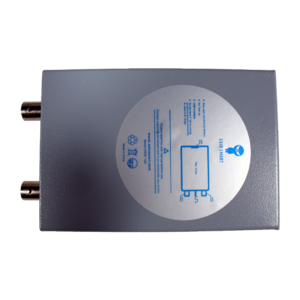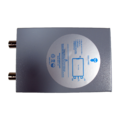Difference between revisions of "SainSmart DDS120"
Uwe Hermann (talk | contribs) (Move vendor protocol info, cleanup firmware info.) |
Uwe Hermann (talk | contribs) (Moved firmware info, cleanups.) |
||
| Line 62: | Line 62: | ||
== Protocol == | == Protocol == | ||
We use an open-source firmware | We use an open-source firmware for this device (i.e., not the vendor firmware/protocol), hence we do not need to know the vendor protocol. There is some [[SainSmart_DDS120/Info#Vendor_firmware|historic vendor firmware/protocol info]] for those interested, though. | ||
There is some [[SainSmart_DDS120/Info#Vendor_firmware|historic vendor firmware/protocol info]] for those interested, though. | |||
== Firmware == | == Firmware == | ||
In order to use this device, the [[fx2lafw|sigrok-firmware-fx2lafw]] (>= 0.1.4) firmware is required. | |||
== Resources == | == Resources == | ||
Revision as of 19:28, 1 November 2016
The SainSmart DDS120 is a USB-based, 2-channel oscilloscope with an analog bandwidth of 20MS/s and 48MS/s sampling rate.
This device appears to be a rebadge of the Rocktech BM102 (or vice versa). The lsusb is exactly the same, the PCB is exactly the same (both have a "656517" and "102LJT1402" silkscreen), and the components used appear to be the same as well.
The device was apparently created by someone named "buudai" in 2012 (also reflected in the lsusb and in the former buudai.com website).
See SainSmart DDS120/Info for more details (such as lsusb -v output) about the device.
Hardware
- USB: Cypress CY7C68013A-100AXC (FX2LP) (datasheet)
- 64-kbyte I²C EEPROM: Microchip 24LC64I (datasheet)
- Crystal: 24MHz
- 145 MHz FastFET Opamps: AD8065ART-R2: (datasheet)
Or in newer hardware:
- Dual 8bit, 100MSPS ADC: MXTronix MXT2088 (datasheet)
- 145 MHz FastFET Opamps: AD8065: (datasheet)
- 4x CMOS differential 4-channel analog mux/demux with logic-level conversion: Texas Instruments CD4052B(M) (datasheet)
Photos
Teardown 1:
Teardown 2 (purchased 03/2016):
Protocol
We use an open-source firmware for this device (i.e., not the vendor firmware/protocol), hence we do not need to know the vendor protocol. There is some historic vendor firmware/protocol info for those interested, though.
Firmware
In order to use this device, the sigrok-firmware-fx2lafw (>= 0.1.4) firmware is required.


























